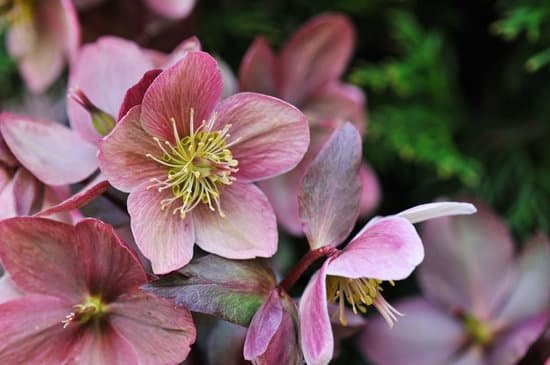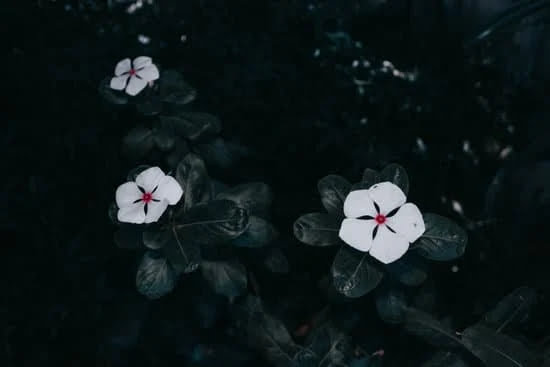As the winter chill begins to fade and the days grow longer, it’s time to start thinking about gardening ideas for spring. Spring is the perfect time to refresh and revitalize your garden, welcoming the season with a stunning garden makeover. From planning and planting to maintenance and decor, there are countless ways to enhance your outdoor space and embrace the beauty of spring.
With the arrival of spring, gardeners everywhere are eager to get their hands dirty and breathe new life into their outdoor spaces. Whether you’re an experienced gardener or a newcomer to the world of horticulture, there’s something undeniably exciting about the prospect of a fresh start in the garden. In this article, we’ll explore a variety of gardening ideas for spring, from plant selection and DIY projects to seasonal maintenance and decorative accents.
Spring is a time of renewal and growth, making it the ideal season to give your garden a much-needed update. From setting goals and priorities to creating vibrant floral displays, there are countless opportunities to transform your outdoor space into an inviting retreat. Let’s dive into some inspiring gardening ideas for spring that will help you make the most of this beautiful season.
Garden Planning
Assessing Your Garden Space
Before diving into gardening ideas for spring, it’s essential to assess your garden space and identify the areas that need attention. Take note of any existing plantings, structures, or features that you want to retain or incorporate into your spring garden design. Consider the layout of your garden space and how you can optimize it for better functionality and aesthetics. By taking the time to assess your garden space, you can better plan and prioritize your spring gardening projects.
Setting Spring Gardening Goals
Once you have assessed your garden space, it’s time to set specific goals for the spring season. Determine what you want to achieve with your garden makeover – whether it’s creating a colorful flower bed, growing a bountiful vegetable patch, or establishing a herb garden.
Setting clear goals will help you stay focused and organized as you embark on your spring gardening journey. Whether you’re a novice gardener or have years of experience, having well-defined goals will guide your decision-making process throughout the season.
Prioritizing Tasks and Projects
With your goals in mind, prioritize the tasks and projects that need to be addressed in your spring garden. This may include soil amendment, mulching, planting new additions, or reviving existing plantings. By breaking down your gardening tasks into smaller, manageable steps, you can tackle them more efficiently and effectively.
Consider creating a timeline for each task or project to ensure that you stay on track with your spring gardening plans. Approaching garden planning with clear priorities will set the stage for a successful and productive season ahead.
Choosing the Right Plants
Spring is a delightful time to revitalize your garden with a burst of color and life. When choosing plants for your spring garden, it is crucial to consider factors such as climate, sunlight exposure, and soil type. Flowers such as tulips, daffodils, and hyacinths are popular choices for spring blooms due to their vibrant colors and resilience in cooler temperatures.
For vegetable gardening ideas for spring, consider planting leafy greens like spinach and lettuce, as well as cool-season crops such as broccoli and peas. Additionally, herbs like parsley, cilantro, and chives thrive in the springtime and add fresh flavors to your culinary creations.
In order to ensure a vibrant and thriving garden during the spring season, it’s important to select plants that are suitable for your specific growing conditions. Consider conducting a soil test to determine the pH levels and nutrient content of your garden soil.
This will help you choose plants that are best suited for your soil type. Additionally, pay attention to the sunlight exposure in different areas of your garden when selecting plants, as some may require full sun while others prefer partial or full shade.
A diverse range of flowers, vegetables, and herbs can contribute to a vibrant spring garden that offers beauty, sustenance, and aromatic delights. By choosing the right plants based on your gardening environment and preferences, you can create a stunning outdoor space that brings joy and fulfillment throughout the spring season.
| Spring Plants | Growing Conditions |
|---|---|
| Tulips | Full sun or partial shade; well-draining soil |
| Spinach | Cool temperatures; moist soil rich in organic matter |
| Parsley | Partial shade; fertile, well-drained soil |
Creative Container Gardening
In urban areas and small spaces, gardening can be a challenge. However, with some creative container gardening ideas for spring, it’s still possible to have a vibrant and flourishing garden even in limited spaces. Whether you have a balcony, patio, or even just a windowsill, there are plenty of options for creating a beautiful urban garden.
When planning your container garden for spring, consider the amount of sunlight your space receives and choose plants that are suitable for those conditions. Many vegetables and herbs can thrive in containers, such as tomatoes, peppers, lettuce, basil, and rosemary. Additionally, flowers like petunias, marigolds, pansies, and geraniums are ideal for adding color to your small space garden.
One creative idea for container gardening is to use vertical space effectively by using hanging baskets or wall-mounted planters. This not only maximizes the space you have but also adds visual interest to your urban garden. Another tip is to include a mix of different plants with varying heights and textures to create depth and dimension in your small garden oasis.
| Gardening Ideas | Examples |
|---|---|
| Choosing Plants | Vegetables like tomatoes, peppers; Herbs like basil, rosemary; Flowers like petunias, marigolds |
| Vertical Gardening | Hanging baskets or wall-mounted planters |
| Varying Heights and Textures | Mix of different plants with varying heights and textures |
DIY Garden Projects
Spring is the perfect time to take on some DIY garden projects that will enhance the beauty and functionality of your outdoor space. Whether you have a large backyard or a small urban garden, there are plenty of creative ideas to explore. Here are some gardening ideas for spring to inspire your next project:
1. Building Raised Beds: Raised beds are a great way to create defined growing areas and improve soil drainage for your plants. You can use materials like wood, concrete blocks, or even recycled materials to construct raised beds of any size and shape. Consider building multiple tiers for a striking visual effect.
2. Constructing Trellises: Vertical gardening is an excellent way to maximize limited space and add visual interest to your garden. Build trellises for climbing plants like cucumbers, peas, and beans using bamboo poles, PVC pipes, or metal rods. You can also repurpose old ladders or wooden frames as unique trellis structures.
3. Creating Pathways: Define the pathways in your garden by laying down gravel, stepping stones, or decorative pavers. This not only adds functionality but also creates a sense of organization and structure within the garden. Consider incorporating curves and gentle bends to create a more natural flow.
These DIY garden projects offer endless opportunities for personalization and creativity while adding practical elements to your outdoor space.
Seasonal Garden Maintenance
Spring is the perfect time to give your garden some much-needed maintenance to ensure it thrives throughout the season. From pruning and weeding to soil preparation, here are some essential tasks to keep your garden in top shape.
When it comes to pruning, start by removing any dead or damaged branches from trees, shrubs, and perennial plants. This will encourage healthy growth and improve the overall appearance of your garden. Additionally, be sure to cut back any overgrown or unruly plants to maintain a well-kept look.
Weeding is another important task for maintaining a healthy garden. Spring is the time when weeds tend to proliferate, so be diligent about removing them from your flower beds and vegetable patches. Consider using mulch to help prevent weed growth and retain moisture in the soil.
Soil preparation is key to ensuring that your plants receive the nutrients they need to thrive. Begin by testing the pH of your soil and amending it as necessary. Adding organic matter such as compost or well-rotted manure can improve soil structure and fertility, providing a healthy foundation for your plants.
To make seasonal garden maintenance easier, consider creating a checklist of tasks that need to be completed throughout the spring months. This will help you stay organized and ensure that nothing gets overlooked as you work towards achieving a thriving garden this spring.
- Prune dead or damaged branches
- Cut back overgrown plants
- Remove weeds regularly
- Use mulch to prevent weed growth
- Test soil pH and amend as needed
- Add organic matter such as compost or manure
- Create a seasonal maintenance checklist
Attracting Pollinators
Creating a Pollinator-Friendly Environment
To attract bees and butterflies to your garden, it’s important to create an environment that is conducive to their needs. Planting a variety of flowers that bloom at different times throughout the spring season will provide nectar for pollinators. Selecting native plants is also beneficial, as they are well-suited to the local climate and will attract a wider range of pollinators.
Providing Habitat for Pollinators
In addition to planting flowers, providing habitat for pollinators is key. Creating a diverse landscape with trees, shrubs, and even a small water feature can offer shelter and nesting sites for bees and butterflies. Leaving some areas of the garden undisturbed, such as leaving a patch of unmulched soil or some leaf litter, can also provide important habitat for pollinators.
Avoiding Harmful Pesticides
When creating a bee and butterfly-friendly garden, it’s essential to avoid using harmful pesticides that can harm these important pollinators. Instead, opt for natural pest control methods or use insecticidal soaps and neem oil sparingly. By eliminating pesticide use in your garden, you can help protect the health and well-being of all the creatures that call it home.
By following these tips for creating a bee and butterfly-friendly garden, you can not only enjoy the beauty of these vital pollinators but also contribute to the health of your local ecosystem. Incorporating these ideas into your gardening plans for spring will ensure that your garden is buzzing with life and color throughout the season.
Spring Garden Decor
As the weather warms up and the flowers start to bloom, there’s no better time to spruce up your outdoor space with some spring garden decor. Adding colorful accents and outdoor furniture can transform your garden into a cozy outdoor retreat where you can relax and enjoy the beauty of nature. Whether you have a small balcony or a spacious backyard, there are plenty of gardening ideas for spring that can help you create an inviting outdoor oasis.
When it comes to spring garden decor, adding pops of color is essential for creating a vibrant and lively atmosphere. Consider planting an array of colorful flowers such as petunias, daisies, and tulips to brighten up your garden beds and borders. You can also add decorative planters in different shapes, sizes, and colors to create visual interest and enhance the overall look of your outdoor space.
In addition to colorful flowers, incorporating outdoor furniture into your garden is another great way to create a cozy outdoor retreat. From comfortable patio chairs and loungers to stylish dining sets and hammocks, there are endless options for creating functional seating areas where you can unwind and entertain guests.
To add a touch of charm to your outdoor space, consider adding decorative elements such as lanterns, wind chimes, and string lights that will illuminate your garden during warm spring evenings. With these gardening ideas for spring in mind, you can transform your outdoor space into a charming retreat that reflects the beauty of this season.
Conclusion
Spring is the perfect time to refresh and rejuvenate your garden, and what better way to embrace the beauty of the season than through gardening? As the weather begins to warm up and nature comes back to life, it’s the ideal opportunity to breathe new life into your outdoor space. Whether you’re a seasoned gardener or just starting out, there are endless possibilities for creating a vibrant and thriving garden this spring.
One of the best gardening ideas for spring is to start by setting clear goals and priorities for your garden. This could involve deciding whether you want to focus on growing flowers, vegetables, herbs, or a combination of all three.
Once you have a clear plan in mind, you can then move on to selecting the right plants that will thrive in the spring season. From colorful tulips and daffodils to fresh herbs like basil and mint, there are endless options to choose from that will add a burst of color and fragrance to your garden.
In addition to choosing the right plants, consider getting creative with container gardening if you have limited space or an urban garden. Whether it’s using hanging baskets, vertical planters, or repurposed containers, there are many ways to maximize space while still enjoying a bountiful garden. Another great idea for sprucing up your outdoor space is tackling DIY garden projects such as building raised beds, trellises, or pathways.
These projects not only add visual interest but also contribute to the overall functionality of your garden. By incorporating these gardening ideas for spring into your plans, you can create a beautiful and inviting outdoor retreat that celebrates the beauty of the season.
Bonus Section
As we wrap up our discussion on gardening ideas for spring, it’s clear that this season offers a wealth of opportunities to transform your outdoor space into a vibrant and blooming oasis. Whether you’re an experienced gardener or just starting out, there are endless possibilities for creating a beautiful and thriving garden this spring.
With the arrival of warmer weather, now is the perfect time to roll up your sleeves and get your hands dirty. From setting goals and priorities for your garden to choosing the right plants and tackling DIY projects, there are countless ways to make the most of this colorful season. Whether you have a small urban space or a sprawling backyard, container gardening and creative landscaping can help you maximize every inch of your outdoor area.
In conclusion, embracing the beauty of spring through gardening not only adds aesthetic appeal to your home but also provides a sense of fulfillment and tranquility. As you embark on this exciting journey, remember to stay organized with our bonus section: Spring Gardening Checklist – Essential Tasks for a Thriving Garden in Spring.
By staying on top of tasks such as pruning, weeding, and soil preparation, you’ll be well on your way to enjoying a lush and bountiful garden throughout the spring season. Keep these tips in mind as you bring your gardening ideas for spring to life.
Frequently Asked Questions
What Should I Do to My Garden in the Spring?
In the spring, it’s crucial to clean up your garden by removing any debris, pruning dead branches, and preparing the soil for planting. It’s also a good time to apply fertilizer and mulch to promote healthy plant growth.
What Is the Best Thing to Plant in Spring?
The best things to plant in spring are cool-season vegetables like lettuce, spinach, carrots, and broccoli. These plants thrive in the cooler temperatures of spring and can be harvested before the heat of summer arrives.
When Should I Start My Spring Garden?
The timing for starting your spring garden will depend on your local climate and frost dates. Generally, you can start planting seeds indoors 6-8 weeks before the last expected frost date in your area.
Outdoor planting can typically begin after the last frost date has passed. Be sure to check with local gardening resources for specific timing in your region.

Welcome to my gardening blog! I am passionate about plants and enjoy sharing my knowledge and experiences with others. In this blog, I will write about everything related to gardening, from tips on how to get started to updates on my own garden projects.





